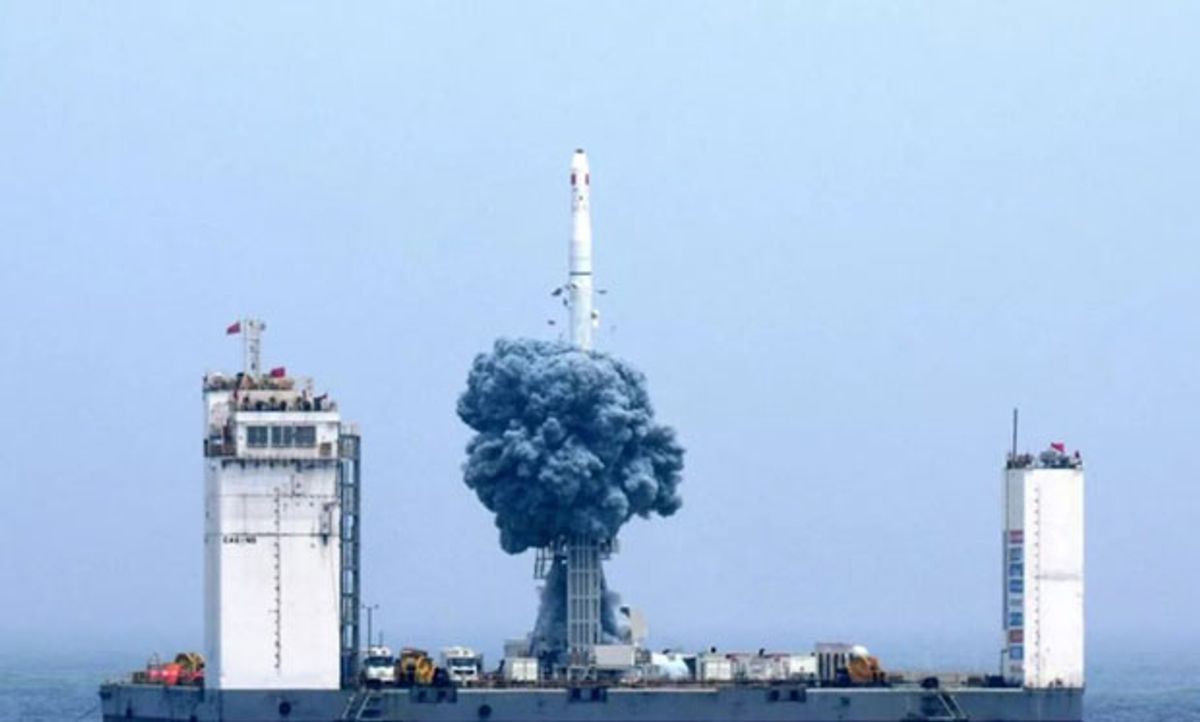Early on 5 June, China made the world’s first sea-based orbital launch in five years, sending a Long March 11 rocket toward orbit. Amazingly, the event was filmed by a satellite passing overhead.
The video shows, through cloud cover, the ignition and launch of a Long March 11 solid-fueled rocket from a specially converted platform in the Yellow Sea between China and the Korean Peninsula, at 04:06 UTC.
The spectacular footage was captured by a Jilin-1 video satellite. Though around 550 kilometers up and traveling at 7.9 kilometers per second, it was capable of ‘staring’ at the precise area in order to catch the dramatic event on the surface below.
Satellites in low earth orbit complete a lap around the planet once every 90 minutes or so, but don’t pass over the same areas each time, so the launch had to be coordinated with the satellite’s orbit in order to capture it.
“You need to make sure the launch is at the same time as the satellite pass,” says Jonathan McDowell, an astronomer at the Harvard-Smithsonian Center for Astrophysics. “That may require small orbit adjustments for the satellite, but doesn’t need to be super precise.”
The Jilin-1 Earth observation satellite was one of nine in orbit made by Changguang Satellite Technology Co. Ltd., a commercial offshoot from the Changchun Institute of Optics, Fine Mechanics, and Physics (CIOMP) in northeast China, owned by the Chinese Academy of Sciences. The Jilin constellation consists of optical and video Earth observation satellites that provide remote sensing data to clients for uses related to forestry, land use, shipping, natural resources, environment, and urban planning.
The company emerged after a 2014 Chinese government policy change to allow private capital into areas of the space sector, including small satellites and launch vehicles.
The government is facilitating the establishment of commercial and private space companies with the aim of developing new technology, driving innovation, and reducing costs for both civilian and military use, while also seeking to stimulate economic growth through space-related activities, including providing access to space, manufacturing satellites, or developing downstream applications, such as communications, geospatial products, and location-based services.
Aboard the 20.8-meter, 58-metric-ton Long March 11 were seven satellites, including another Jilin-1 high-resolution Earth observation satellite, taking the number of satellites in the nascent Jilin Earth observation constellation to ten.
The launch was China’s first attempt at a sea launch, a capability which will allow it to carry out launches at low latitudes, from which rockets heading into low-inclination orbits get a boost from the greater rotational speed of the Earth at the equator, helping them toward the 7.9 km/s velocity required to achieve orbit. This means reduced fuel requirements or the possibility of sending heavier payloads into orbit. Sea launches could also reduce the amount of rocket debris which falls on populated areas after launches from China’s inland satellite launch sites.
Views of the launch from the platform were also impressive, showing the Long March 11 being expelled from a launching tube before igniting in mid-air.
Updated to include more information about the Jilin satellite constellation.
Andrew Jones is a freelance journalist based near Helsinki. He writes about the space industry and technology with a particular focus on China's activities.



